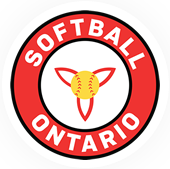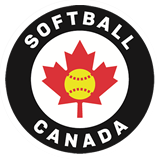B
ball – as called by the umpire, a pitch that does not enter the strike zone in flight and is not struck at by the batter
base – one of four points on the infield that must be touched by a runner in order to score a run. Also applies to the rubber or canvas bags comprising first, second, and third base, as well as the hard plastic or rubber plate known as home plate.
baseline – the area between each base along which the base runner must generally run
base runner – a batter who has reached base safely
batter – also known as “hitter”; an offensive player who takes his/her position in the batter’s box to try to hit the pitch
batter’s box – a rectangular area beside home plate where the batter must stand to hit the pitch
batting order – the official list giving the sequence in which members of the (offensive) team must come to bat
C
catcher – defensive player who normally positions him/herself behind home plate and receives pitches
center fielder – the defensive player positioned near the middle of the outfield
D
defensive team – the nine players in the field (pitcher, catcher, 1st, 2nd, & 3rd basemen, shortstop, and left, center, and right fielders)
F
fair ball – a ball hit into the field of play
fielder – any one of the nine players on the defensive team (pitcher, catcher, 1st, 2nd, & 3rd basemen, shortstop, and left, center, and right fielders)
first baseman – the defensive player in the portion of the infield near the bag that the batter will initially run to (invisible line goes from catcher to first baseman to right fielder)
foul ball – a batted ball that settles on foul territory between home and first base, or between home and third base, or that bounds past first or third base on or over foul territory, or that first falls on foul territory beyond first or third base, or that, while on or over foul territory, touches the person of an umpire or player, or any foreign object to the natural ground; A foul fly shall be judged according to the relative position of the ball and the foul line, including the foul pole, and not as to whether the infielder is on foul or fair territory at the time he/she touches the ball.
foul lines – the two straight lines extending from home plate past the outside edges of first and third bases to the outfield fence
foul tip – a batted ball that goes sharply and directly from the bat to the catcher’s hands and is legally caught. It is not a foul tip unless caught, and any foul tip that is caught is a strike, and the ball is in play. It is not a catch if it is a rebound, unless the ball has first touched the catcher’s glove or hand
H
hit – when a batter reaches first base (or any succeeding base) safely on a fair ball which settles on the ground or touches a fence before being touched by a fielder, or which clears a fence; when a batter reaches first base safely on a fair ball hit with such force, or so slowly, that any fielder attempting to make a play with it has no opportunity to do so; when a batter reaches first base safely on a fair ball which takes an unusual bounce so that a fielder cannot handle it with ordinary effort, or which touches the pitcher’s plate or any base (including home plate) before being touched by a fielder and bounces so that a fielder cannot handle it with ordinary effort; when a batter reaches first base safely on a fair ball which has not been touched by a fielder and which is in fair territory when it reaches the outfield unless in the scorer’s judgment it could have been handled with ordinary effort; when a fair ball that has not been touched by a fielder touches a runner or an umpire, when a fielder unsuccessfully attempts to put out a preceding runner, and in the scorer’s judgment the batter would not have been put out at first base by ordinary effort
home plate – the five-sided piece of whitened rubber that the batter stands beside to hit the pitch
homerun – a safe hit, when no error or putout results, which allows the batter to reach all four bases and score a run; usually a fly ball in fair territory which goes over the outfield fence
I
infield – the diamond-shaped area in fair territory formed by the three bases and home plate that is normally covered by defensive players (known as infielders)
inning – that portion of the game within which the teams alternate on offense and defense and in which there are three putouts for each team. Each team’s at-bat comprises a half-inning
L
left fielder – the defensive player in the outfield closest to the third base foul line
O
offensive team – the team that is at bat
P
pitcher – the player who throws the ball to the batter
R
right fielder – the defensive player in the outfield closest to the first base foul line
run – the point scored when a batter or base runner advances to home plate
rover – a tenth (10th) defensive player used in some recreational leagues. The Rover plays exclusively in the outfield, and while he or she can move around the outfield the Rover generally plays either between Right Field and Centre Field, or between Left Field and Centre Field depending on the Batter
S
shortstop – a defensive player who normally positions him/herself in fair territory between second base and the third baseman
single – a hit that allows a batter to reach first base safely
strikeout – when a batter is put out by a third strike caught by the catcher; a batter is put out by a third strike not caught when there is a runner on first before two are out; a batter becomes a runner because a third strike is not caught; a batter bunts a ball into foul territory after two strikes (unless such a bunt results in a fly ball, which is caught by any fielder. This is not considered a strikeout, but a putout by the fielder)
strike zone – the space over any part of home plate between the batter’s armpits and the top of his/her knees when he/she assumes a natural batting stance
strike – as called by the umpire, a pitch that enters the strike zone in flight and is not struck at by the batter; a pitch that a batter swings at and misses; a foul ball
T
third baseman – the defensive player in the infield stationed near the last bag that a base runner would touch before heading for home plate (invisible line goes from catcher to third baseman to left fielder)
W
walk – also called base on balls (BB); an automatic advance to first base for the batter after the pitcher delivers four “balls” as called by the umpire, based on their being outside the strike zone

